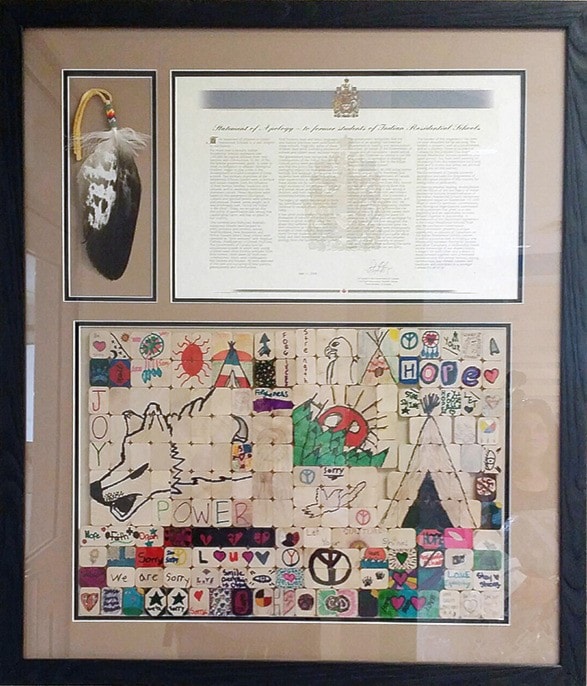A project that took a look back at a terrible part Canada’s history has proven to have left a lasting impression among Ponoka youth.
The Grade 7 students at Ponoka Secondary participated in a project that made them take a hard look at the situation surrounding First Nations treatment in residential schools. Students not only spoke to relatives that were survivors, but also teamed up to make posters, a tile mosaic and a video clip that documented the issue.
Shelagh Hagemann - First Nations, Métis, and Inuit (FNMI) student success coordinator for Wolf Creek Public Schools (WCPS) - explained the project was part of their social students program in the hope that they would get a look some locally relevant history. The project came to fruition on Tuesday, June 21 - which, by no coincidence, was National Aboriginal Day in Canada.
“It was about helping the student to recognize the legacy that has been left behind as a result of the residential schools and the Truth and Reconciliation Commission hearings and its report, as well as the federal government apology,” she said.
“It is not good enough to simply look back at (residential schools), but to provide an opportunity for our First Nations students to learn more about their history and how the survivors have succeeded. It’s also about showing them what has to be done in order to move forward and demonstrating to all of the students about what happened, as most of them didn’t know anything about what went on.”
Louis Bull First Nation elder Joseph Deschamps was also an integral part of the project and felt every student needs to learn about the history behind First Nations.
“This project really was about making them think and motivating them to open their eyes and share their knowledge,” he said.
“By doing that, it is one of the ways we can all move on. Canada has such a young history with a number of the people who were settlers in the land still having no knowledge of First Nations, that’s why this is so important.”
And that importance certainly left an indelible impression on the students, as judged by their reactions to having participated.
Talyi Yellowbird and Odessa Mackinaw both worked on the video and interviewed a relative who survived life in a residential school. Both girls felt they learned more about how First Nations people were treated.
“I was surprised there were still survivors out there, which included my kokum (Cree for grandmother),” said Yellowbird. “It’s very emotional and sad about how tough it was for them.”
Mackinaw also talked to her kokum and found out something she never knew.
“She was surprised that I wanted to talk about it and that we were learning about what happened. Not much of it was new, but I learned that most of them that were at the residential schools tried to run away at least once.”
Laci Bell and Fiona Knobles were part of the group that created the tile mosaic, that now stands in a frame alongside the federal governments formal apology for the residential schools and a ceremonial feather that hangs outside the main office at the school in recognition of how important First Nations are to the culture of WCPS.
“Working on the tiles was my way of showing the story, letting everyone know just what happened and that a lot of people never knew exactly what went on,” said Bell. “It was good to learn about a different culture and to see just how they were treated plus how we should all be treated now.”
For Knobles, who painted a bird as part of the mosaic to represent freedom, the project helped her appreciate a few things about the survivors.
“I was shocked at just how many suffered (at the residential schools) so it was important for me to help create the picture in order to better relate to them and as a way to say sorry,” she stated.
One of the non-First Nations students, Daniel Aitken, helped edit the video and it really affected his thinking after having never heard anything about their treatment before.
“It made me feel really bad as I learned more,” he said.
“I heard a lot of things (in the video) that I did not understand before - about how they were affected and what it cost to their culture and way of life. It definitely benefited me and other non-First Nations students in helping them relate better to our First Nations people.”
